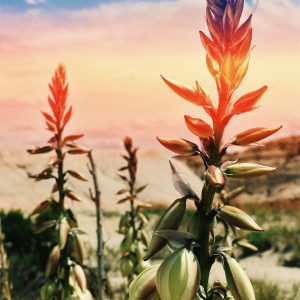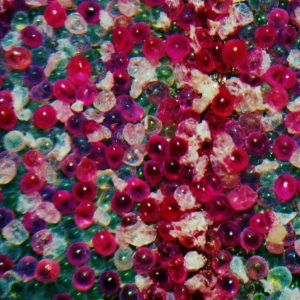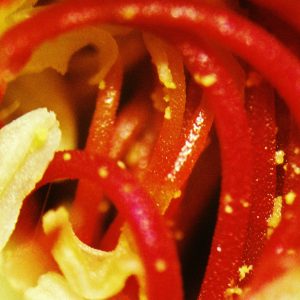
View from South Fork American River Trail in Pine Hill Preserve
Our eyes can deceive us. We may see something and develop a desire for it, but until we actually experience it, we cannot know if our desire is for what it is what we’ve actually seen OR if our desire is for what we have perceived that something to be based on our knowledge and past experiences. For instance, a man may see a recliner in a furniture store and think it’s going to be the most comfortable chair to set in front of the tv at home, but until he sits in it and experiences the level of comfortability it provides, he doesn’t know if he really desires this particular chair. Or perhaps a woman sees a dessert and desires to eat it; unless she actually tastes the dessert, she cannot know if she desires exactly what she sees or if she desires what she perceives the taste of the dessert to be.
It can be the same with a career. I grew up thinking I had wanted to be a teacher. After a few years of teaching high school biology, I learned that I love to teach but that my childhood desire of being a teacher by profession was based on an incomplete, experience-lacking perception.
Through my CLM internship with the BLM, not only have I been learning both the hits and misses of my pre-experience perception of working in land management, but I am also learning how to adjust to the misses and capitalize on the hits.

Pulling YST (yellow star thistle) at Pine Hill Preserve
Generally my misses revolve around the nature of how I function, so to speak. For instance, I am a list person. I make lists of what I need to do and feel productive and successful if I can cross items off the list. Although land managers can regularly accomplish objectives, land management goals and projects are often long-term (multi-year). I am learning that I can leave a field at 4:30 even if I didn’t pull every yellow star thistle plant and that I can even cross “pull yellow star thistle” off my list, because there will always be more of it (or another invasive) to remove. And there will always be something new to add to the list tomorrow, next week, next month, next year (especially with adaptive land management!).
I also tend to work, hmmm, systematically? Or perhaps I should say I perform tasks in an “orderly” way, in an order that makes sense to me and motivates me to keep moving through my to-do list. For example, item #1 on the list should be crossed off before I begin #2. I can multi-task, but I am definitely wired to focus on one project at a time and fully immerse myself into it. My ability to focus, however, can negatively affect my time management skills. These characteristics do not usually jive with the nature of land management which frequently involves having multiple irons in the fire (several projects in the works) at a time. I am learning how to effectively prioritize and juggle land management tasks and projects and re-learning the importance of setting a deadline when no particular deadline has been set in order to keep me on task and not too focused on just one project.

Splashes of purplish-pink in the chaparral--Cercis occidentalis (western redbud) during spring
Being a planner may be the most challenging characteristic that requires some adjusting for me. I like to plan out my days and weeks, I like to know what I’m doing when I show up to work for the day; knowing what is ahead helps me manage time and accomplish tasks more efficiently. (And I can be sure to put on the appropriate attire for the field or for the office.) However, managing land is about working within the natural system, and natural systems are variable in their cycles and how they respond to environmental conditions. A land manager often can aim to complete a project by a particular date, but the “deadlines” sometimes serve more as “guidelines” due to factors that are beyond the control of a land manager. (With all the interconnectedness of their individual parts, ecosystems don’t always function as systematically or predictably as we would like them to.) Moreover, the role of a federal land manager extends beyond managing land; it’s about working with people—educating the public about the resources of the land, organizing and facilitating outreach events, coordinating with partners to accomplish large management goals, communicating progress with funders as well as the state and national offices, maintaining the land according to the allowable uses (i.e. hiking, biking, grazing, hunting) and dealing with the unfortunate abuses (i.e. trash dumpings, trespasses). I am learning to be patient and flexible, to go with the flow, to keep a list of alternative tasks to do if “the plan” falls through, to respond to the changing circumstances—the weather (rain?!), species biology (it’s not fruiting yet?), and/or concerns involving members of the public (fuel breaks between homes and BLM land is a critical priority; trespass issues are also important to deal with in a timely manner).

Calystegia stebbinsii (Stebbin's morning-glory), a federally listed plant, intertwined with Adenostoma fasciculatum (chamise)
The upside of the unpredictability associated with planning is that there is always a plethora of management activities that can be done—from writing reports to picking up trash, from coordinating volunteers to monitoring populations, from creating a brochure to leading a hike for members of the public—there will always be something else to do if the plans fall through. For a planner like me, the downsides have included not wearing the appropriate attire, leaving my lunch and/or extra water at the office not realizing that I would not be returning to the office until mid- to late afternoon, and finishing work later than expected and having to shift evening plans.
I know it’s sounding like my desire to pursue a career in conservation and land management was way off, based solely on misperceptions or ignorance…perhaps I had desired what I formerly perceived and lacked the experience to verify my perception. Hold on, not so fast. There are definitely some hits, too. But I’ll save them for another day…stay tuned!























